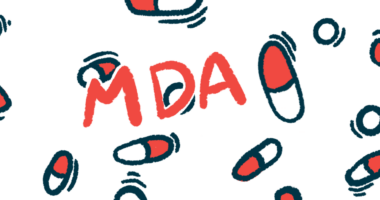MDA 2023: DMD boys show motor gains with cell therapy DT-DEC01
Three patients reviewed at MDA conference received lowest planned dose

Note: This story was updated March 31, 2023, to clarify that the presentation was given at the Muscular Dystrophy Association’s MDA Clinical & Scientific Conference.
Three boys with Duchenne muscular dystrophy (DMD) treated with the experimental cell therapy DT-DEC01 in a clinical trial continue to show improvements in motor function up to a year after treatment.
Ahlke Heydemann, PhD, with the University of Illinois at Chicago, presented the findings at the Muscular Dystrophy Association’s MDA Clinical & Scientific Conference in Texas and virtually March 19-22 in a talk titled “Assessment of Preliminary Safety and Efficacy of DT-DEC01 Therapy in Duchenne Muscular Dystrophy Patients, up-to 12-months post administration.”
In DMD, genetic mutations disrupt the production of dystrophin, a protein important for maintaining muscle health. Dystrogen Therapeutics‘ DT-DEC01 seeks to restore dystrophin production in myoblasts (muscle precursor cells), allowing them to create muscle fibers with the protein.
The therapy works by taking myoblasts from a patient and fusing them with myoblasts from a non-DMD donor, creating new cells called dystrophin expressing chimeric (DEC) cells. These cells are then transplanted into the patient’s bone marrow, where they can migrate to muscle tissue and join with myoblasts there.
Heydemann said DT-DEC01 has several potential advantages — it doesn’t require any immune-suppressing treatment and it can theoretically be administered multiple times to the same patient, which sets it apart from other gene therapies being developed. It also could theoretically be given alongside other DMD treatments.
“I think that’s probably going to be the solution in the long run, that doctors have more than one thing to offer their patients, so the patient can be on a group of therapies each helping the muscle get stronger,” Heydemann said.
Gains with DT-DEC01 in three boys with DMD
DT-DEC01 is being investigated in an investigator-sponsored clinical trial in Poland, which seeks to test three doses of it in 10 boys with DMD.
The presentation at the MDA conference covered data from the first three boys in the study who were given the lowest planned dose (2 million cells per kilogram of body weight). Two boys were enrolled and dosed at age 6 when they could still walk. The third is a 15-year-old who’s been using a wheelchair since age 11.
The patients have been followed for 12-16 months since treatment and no side effects related to DT-DEC01 have been reported.
“We had no adverse effects and no severe adverse effects in any of these three boys up to 16 months post-treatment,” Heydemann said. “I think if we had had severe effects, they would have already reared their ugly head.”
In line with earlier results, all three boys have seen improvements or stabilization across various measures of motor function. This differs from the typical course of DMD, which usually worsens over time starting around age 6.
Physical activity — daily steps for the two who could walk and arm movements for the teenager, as measured with a worn sensor — increased markedly in all three boys.
Measures of grip strength improved in the teenager and one of the younger boys, while grip strength measures were stable with the other child. The teenager also showed gains in measures of lung function.
The six-minute walk distance, a common measure of walking ability, remained stable for one of the ambulatory children, while the distance increased with the other. Scores on the North Star Ambulatory Assessment (NSAA), a test of motor function for patients who can walk, followed similar trends.
“We are showing improvements in many of the skeletal muscle functional parameters and maintenance in many of the other parameters. We don’t see a decrement in any of them, which we would expect in this age population after one year of monitoring,” Heydemann said.
In all three patients, electromyography (EMG) measures of the electrical activity in some muscle fibers showed significant improvements. In other muscles, electrical activity tended to remain stable over the period analyzed.
“We can see, in general, that the muscles are getting stronger in these patients, in some cases statistically significant. There are a few cases where we’re just achieving maintenance, but of course in this population, maintenance is a win,” Heydemann said. “We’re also very happy about the objective EMG tests, that they mostly showed improvement in these children.”
These early data suggest DT-DEC01 is safe and hint at its potential effectiveness in DMD, supporting further testing. The trial is ongoing, with plans to start a higher dose of the cell therapy on another group.







